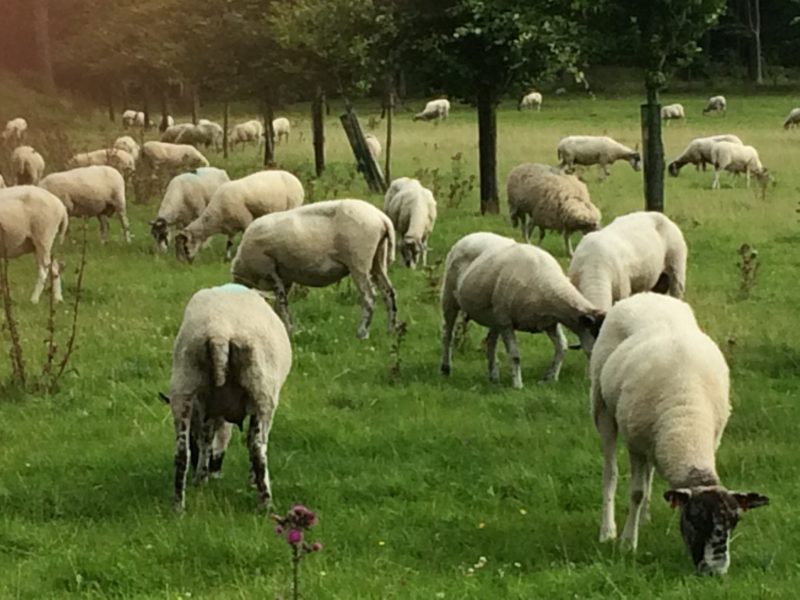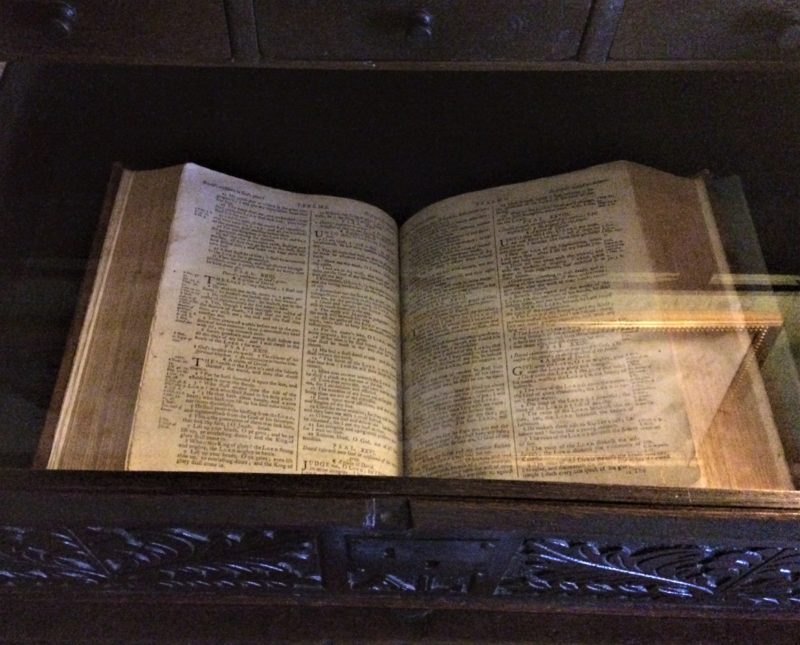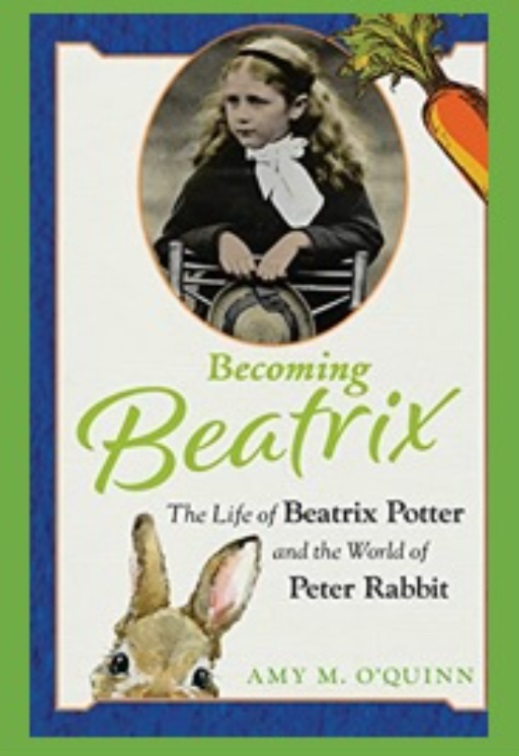Thoughts About Sheep and Beatrix Potter

Aren’t sheep the best—with their woolly fleeces, sweet faces, and quiet personalities? These gentle animals often make us think of green pastures, bucolic scenes, and a slower pace of life. Indeed, when I first visited the English Lake District, I was amazed by the numerous specks of white dotting the countryside as flocks grazed in the distance. They seemed to be everywhere! And sometimes the driver of our car would need to stop the vehicle to let a bunch of sheep cross the road. It was just as I always imagined it would be–perfect.
Of course, sheep are also timid and easily frightened. They tend to wander off, and they are defenseless against predators such as wild dogs or coyotes. That’s why they need a shepherd to watch over them. In this sense, it’s easy to understand why our Heavenly Father compares us, His children, to sheep in the Bible. The correlation is definitely there!
What a comfort to know that we have a Gentle Shepherd—always caring, constantly watching, finding and retrieving the lost, restoring calmness and peace, and loving us through it all. Without His presence, we would be like the sheep gone astray who is at the mercy of the predators of this world. There are a lot of lessons we can learn from sheep.
My newest book, Becoming Beatrix: The Life of Beatrix Potter and the World of Peter Rabbit is being released this month. Of course, I read Potter’s tales growing up, and I read them to my own children when they were young. I’ve always been fascinated by Beatrix Potter’s life story, but it wasn’t until I first visited her home, Hill Top Farm, in the English Lake District in 2017 that I really became interested in her accomplishments beyond writing her little books about Peter Rabbit and his friends. That’s when I learned that she was also a scientist, mycologist, conservationist, preservationist, and sheep farmer and breeder.
Beatrix Potter faced many obstacles and sad events in her life, including the death of her publisher/fiancé Norman Warne, only one month after he proposed. However, she found solace and new purpose at Hill Top Farm in the Cumbrian village of Near Sawrey when she purchased the property in 1905. Beatrix never lived there full-time, as she still needed to care for her aging parents in London, but she still set out to learn everything she could about farming. With the encouragement of Canon Hardwicke Rawnsley, one of the founders of the National Trust and a Potter family friend, Beatrix also began acquiring the quickly dwindling Herdwick sheep breed into her fold.

Due to a change in farming practices in the late 1800s/early 1900s, many of the fell (mountain) farms with their hardy, hill-living Herdwick sheep, were being abandoned. This meant the landscape would change (because the sheep were no longer there to graze and keep the higher properties clean), but the Herdwick breed would also become extinct if something wasn’t done. So, Beatrix did her part by becoming a sheep breeder! And later, after she married William Heelis in 1913, she also began showing her sheep, with the help of her faithful shepherd Tom Storey.
Beatrix loved learning about the natural world, even as an adult. She loved her animals, and she was definitely passionate about protecting the beautiful vistas and landscapes around her from modern development. She wanted to preserve the English Lake District in its marvelous state for others to enjoy.
Before she died, Beatrix set up Hill Top exactly as she wanted the public to see it in the years to come. She and William had lived in nearby Castle Cottage since their marriage, but she planned to leave most of her property holdings (which by that time was quite large) to the National Trust to be preserved for future generations. Therefore, she placed special items, furniture, paintings, family heirlooms, etc. just where she wanted them to be in the Hill Top house.

Beatrix also specified that the Potter family Bible should be displayed with its pages turned to Psalm 23 because she apparently identified with its comforting message about sheep and the Shepherd. If you visit Hill Top Farm today, you can see the Bible for yourself, still turned to Psalm 23.
Application: Read about sheep and list their traits and personality characteristics. Why do they need a shepherd? What life lessons can we learn by studying sheep? Why does the Bible refer to God’s children as sheep? Do you see similarities? Discuss.
If you’d like to learn more about the fascinating life of Beatrix Potter, please check out my newest book, a biography written for all ages, but aimed at readers in grades 4-8.
Visit Amy at amyoquinn.com.
Be sure to sign up to receive updates of each new post on our Christian Children’s Authors blog. Follow us for new book news, free resources, parenting tips, and encouragement!
#christianchildrensauthors #christianbooks #christianauthors #christianwriters #christianteachers #christianbooksforkids #christianchildrensbook #christianchildrensbooks #christianhomeschool #beatrixpotter #sheep


Amy, this is a MUST GET for me! I LIVE the Shepherd-sheep imagery and I love the Beatrix Potter stories. I have numerous figurines.
Thank you for sharing this!
Thanks for this informative article. I’m sure that many children’s writers are big fans of Beatrix Potter and Peter Rabbit. She is a legend, and her books are classics for sure!
Lots in interesting tidbits here. Thanks for sharing!